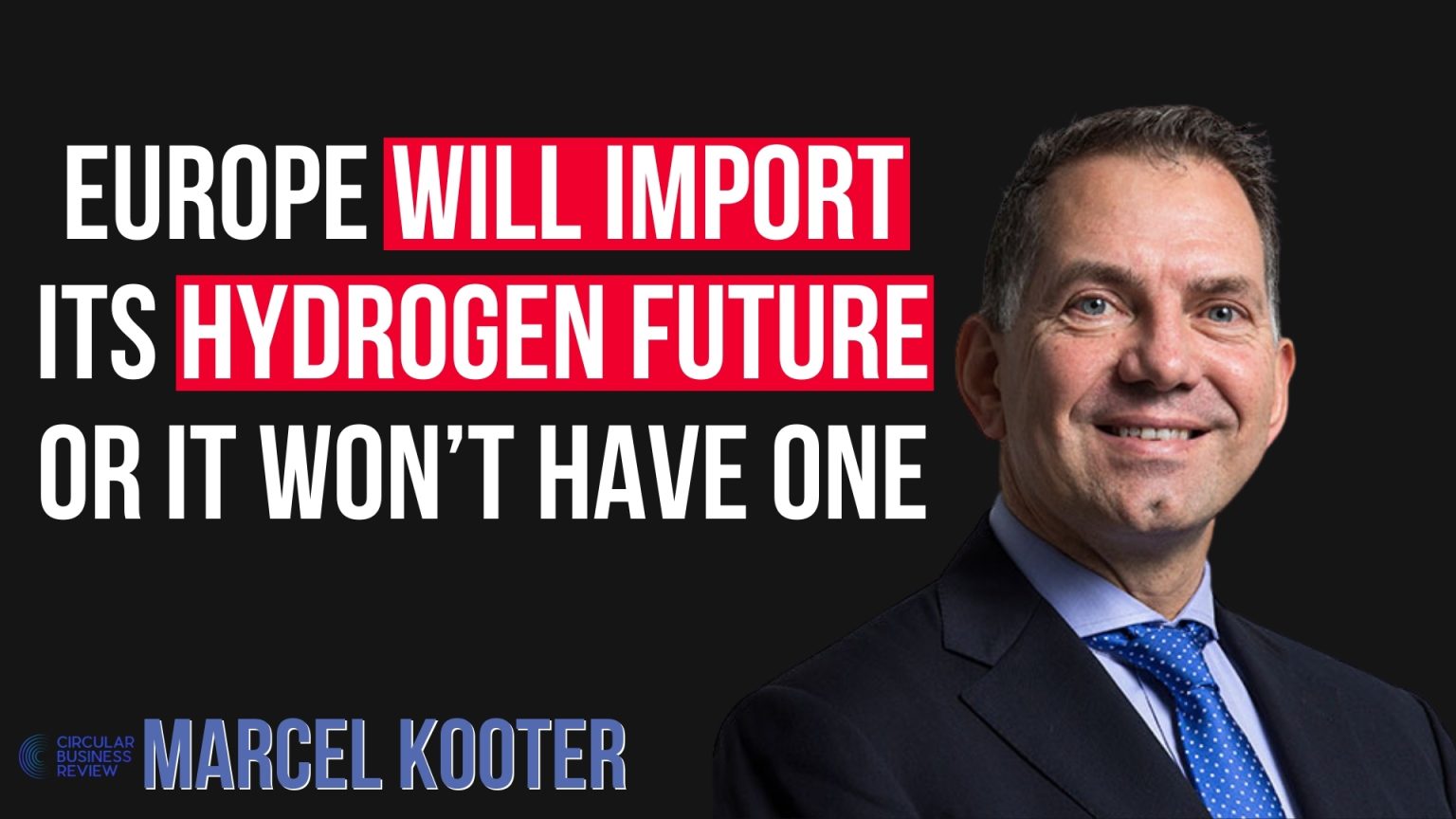Global investment in clean hydrogen has surged from $10 billion in 2020 to $75 billion in 2024, a trajectory that would normally suggest unstoppable momentum. Yet behind the capital inflows, projects are stalling, cost gaps remain unresolved, and infrastructure questions hang over Europe’s ambition to import hydrogen at scale. The experience of Marcel Kooter—who shifted from senior posts at BP and Castrol to co-founding the Holland Hydrogen Hub—illustrates both the promise and the pitfalls.
WATCH THE FULL INTERVIEW
At present, green hydrogen costs between $5 and $8 per kilogram, compared to less than $2 for gray hydrogen. The economics hinge largely on power prices: producing one kilogram requires around 50 kilowatt hours of electricity, meaning costs swing dramatically depending on location. In the Netherlands, industrial electricity averages 15 cents per kWh, translating into roughly $7.50 just in power costs. In contrast, solar auctions in the Gulf have cleared at below $0.02 per kWh, enabling potential production costs of $1–$2 per kg. That disparity underpins the Middle East–to–Europe “hydrogen corridor” concept.
But price parity with fossil fuels remains elusive. The $8.4 billion NEOM project in Saudi Arabia—targeting 1.2 million tons of green ammonia annually—has become a litmus test. While construction is underway, the investment scale highlights the risks of leaping from zero to multi-gigawatt electrolyser capacity. Kooter warns that “learning to walk before running” is critical; several high-profile European projects have already been delayed or canceled, undermining investor confidence.
Infrastructure further complicates the equation. Europe’s existing gas grid cannot simply be repurposed: hydrogen’s small molecular size increases leakage risks, requiring significant sections of new pipeline. The Netherlands, through Gasunie and partners such as Kasini, has launched phased programs connecting ports to industrial clusters, with eventual integration into the European Hydrogen Backbone. Yet the timelines for this build-out are long, while industrial offtake—the single biggest factor in bankability—remains uncertain.
The Middle East offers clear advantages: abundant desert land, a track record in large-scale energy exports, and some of the world’s cheapest renewable electricity. But transport carriers remain unproven at scale. Ammonia dominates current strategies, yet its toxicity and reconversion losses raise concerns. Alternatives such as liquid organic hydrogen carriers (LOHC) or even solid hydrogen concepts are being explored, but none have yet demonstrated commercial viability.
For Europe, the stakes are strategic as much as economic. The Netherlands alone expects to import 60–70% of its hydrogen demand by 2050, a dependency that makes energy diplomacy as crucial as technology deployment. Rotterdam’s long history as an oil and gas hub positions it as a logical gateway, yet questions persist over whether port and storage expertise can offset the technical challenges of handling new carriers.
Global competition is also intensifying. China has invested heavily in domestic hydrogen production capacity, while the U.S. Inflation Reduction Act provides tax credits that cut green hydrogen costs by up to $3/kg. Europe risks being squeezed between these two policy-driven accelerations, even as it pursues autonomy through partnerships with Gulf producers.
Mobility underscores the limits of hydrogen’s reach. Passenger cars are already dominated by battery electrification, and even hydrogen proponents concede the fight is lost in that segment. Instead, hydrogen’s potential lies in industrial heat, green steel, fertilizer production, and long-haul transport—sectors where electrification is either technically or economically constrained. Roughly 70% of global energy demand is still in molecular form, a figure that will not shift rapidly.
For investors, the case rests on a leap of faith that hydrogen will follow the trajectory of solar: high initial costs offset by economies of scale and learning effects. But unlike solar, hydrogen requires simultaneous deployment of production, transport, and end-use markets. Without aligned progress across the value chain, today’s $75 billion surge risks looking more like a bubble than a foundation.
